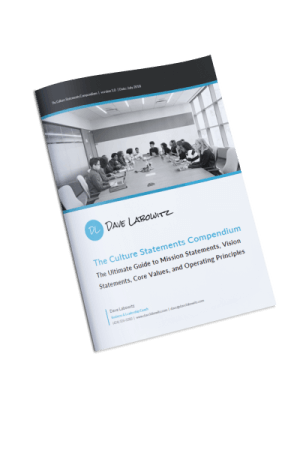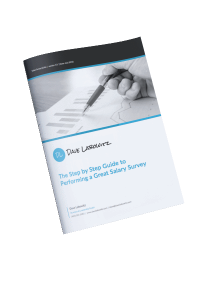Target market or ideal customer avatar (ICA)? Which makes more sense for your business? The answer is simple. It’s both! Target markets and customer avatars work together synergistically. Almost everyone is familiar with the target market approach, probably because it’s impossible to advertise without one. The odd thing, however, is how few people have actually been exposed to the reasons to lay out a clearly identified ICA. In fact, when I graduated with my MBA I had never even heard the term ideal customer avatar! This common deficiency is born out by some quick Google Trends analysis.
Average monthly searches:
- Target market: 14,800
- Customer avatar: 320
What is a target market and how do you identify yours?
Your target market is a description of the range of people or businesses you think will buy your product or service. You’ll use demographics (statistical data) and psychographics (psychological classification) in order to draw the boundaries of your target market. Understanding your target market is extremely important in the success of your advertising.
Why? Because any online marketing platform will ask you for the demographics and psychographics of the audience you’re trying to reach. The more accurate your target marketing work has been, the better your advertising will perform.
Here’s a list of things to think about when laying out your target market. Most of these will be ranges but some will be single data points.
Some example customer demographics (not all will be relevant for your business)
- Age – Normally a range, like 24-36.
- Location – If you’re a local business, this will be a single answer. If you serve multiple geographic areas, this will be a list.
- Familial status – Descriptive answer: single, married, divorced, widowed, number of kids, etc.
- Education level – Normally a minimum level reached.
- Income level – Normally a range.
- Occupation – Normally a list of different occupations and/or industries.
Some example customer psychographics (not all will be relevant for your business)
- Areas of interest – What do they like to learn about? Hobbies? Things that make them smile? Topics they can’t help but click on?
- Belief systems – What means the most to them? Service? Religion? Family? Life-long learning? Spirituality? Physical fitness?
- Lifestyle – Are they outdoorsy, active people? Homebodies? Do they cook? Eat out? Get delivery? Are they online shoppers? Or do they go to the store?
- Things they like
- Influencers – Who do they follow? This is a great one for targeting an audience on
Facebook - Entertainment – What shows do they like? Sports? Dramas?
- Music – Any specific genres that resonate with your market?
- Influencers – Who do they follow? This is a great one for targeting an audience on
- How do they consume media – Any print subscriptions? Desktop or mobile? Which streaming services do they use? Do they listen to podcasts? Read blogs? Watch vlogs?
Target market reasonableness checks
You’ll want to do some reasonableness checks as you start laying out the parameters which boundary your target market:
- Is there a true product/market fit between your offer and their pain points? After you’ve laid out the broad strokes for the market you plan to target, rewind back to the value proposition of your product or service. Does the entire market you’ve boundaried have the pain point/s you’re going to solve? If not, narrow your parameters until the answer is yes. Marketing is expensive! If you’re going after an unnecessarily wide market you will just waste money.
- How big is this market? Enough for you to be successful without winning a crazy % of the market? Once you feel good about your boundaries being in the right place, ask yourself how much of the market you’ll need to engage with in order to hit your financial targets. If you need to sign 50% of the market to be successful, that’s a tall order. It would look a lot more promising if you can have a successful business with 5% of your addressable market, to start. If you’re a grand slam business and hit 50% of the market, awesome. It’s generally not a great idea to count on that, though!
- Can this market afford my product or service? There’s no point in marketing a product or service to a market that can’t afford it. For instance, if you’re selling enterprise-class software that will require a 6-figure implementation fee then you probably won’t have a lot of success selling to startups. They might badly need what you have and love your value proposition, but if they just don’t have the money to strike a check they won’t be customers. If you want them to be a part of your target market you’ll probably have to come up with a skinnier version of the software with a lower price point that works out of the box.
What is an ideal customer avatar (ICA)?
Your ICA is just one person, chosen somewhere out of the middle of your target market. What’s so special about this one person? They’re the profile of who you think of when you think of your perfect client. You know, that one person or business you’re absolutely ecstatic about working with? The client who has the exact pain that you’re solving and loves your solution? You’ll love working with them and they’ll stay as a long-time client. They’ll be so happy with you, they’ll become a strong promoter for your business, writing positive reviews and sending referrals your way.
Really go for the ideal fit when writing up your ICA. Don’t hold back. Be as specific and detailed as possible. Remember, this isn’t a target market exercise. You won’t limit your ability to reach a substantially-sized market by being specific; there’s no such thing as too specific in this exercise. Have fun with this exercise. In fact, it’s a good idea to go as far as naming your ICA.
Ideal customer avatar – a brief example
Your ICA might be named Nancy. Nancy is a 36-year-old mother of two who’s in the process of re-entering the workforce after taking a few years off as a full-time mom. She’s taking a job as a Product Manager at a fast-growing local tech startup in her home neighborhood of Austin, TX. Since she’ll be home much less, she’s looking for a healthy meal-prep delivery service to deliver the ingredients for five dinners per week for her family of four. With both her and her husband, Tom, working (he’s a mid-senior-level software developer), Nancy and Tom’s combined household income is $280,000 per year. This leaves them plenty of discretionary income. She’ll be leap-frogging his salary thanks to her graduate degree and extensive resume, contributing $160,000 of their combined income.
Nancy is an advanced yoga practitioner and teaches an occasional class at her local studio. She identifies as a lapsed Catholic and generally only attends Easter and Christmas mass. She enjoys reading murder mysteries and listening to podcasts if the kids aren’t around.
Do you get the idea yet? You can go far deeper than this with specifics. How old are her kids? What does she like to do with them? If she watches TV, what does she watch? What else does she spend money on? Products? Services?
Really take the time to round out your ICA’s story in a way that she is your absolutely ideal customer. In this case, maybe you’re selling meal prep kits in the local Austin area. Your price point is average to above average and your ideal clients have plenty of discretionary income for lifestyle upgrades. This enables them to prioritize convenience and healthy ingredients over price. Revenue per household is best with at least 4 members in the family, and you prefer customers who are brand sensitive and loyal to brands they like. Doesn’t Nancy sound perfect so far?
A quick note on B2B customer avatars
I see far more entrepreneurs leveraging ICAs than I do those selling B2B products. Partially, this is because it’s a more straightforward exercise for B2C. However, it’s a mistake to miss out on writing up the profile of your ICA just because you’re in the B2B market. In your case, though, you’ll have some extra work to do.
- Start with the company that is your ideal customer. What do they sell? Who are their customers? What industry are they in? How many employees do they have? Annual revenue? One or multiple offices? You get the picture.
- Second, write up the profile of the primary stakeholder at your ideal customer company. This is the person who is actively seeking to solve a pain point and searching actively for your solution. This profile will look more similar to the B2C version above but will require some extra detail. What’s their job title? Do they have direct reports? How is their success measured by their boss? What KPIs matter most to them? Why do they need your product or service? What value will they gain from working with you and how will they measure that value? If this person isn’t the decision-maker, that’s ok. They’ll end up serving as your internal champion through the sales process because they want what you’re selling so badly.
- If the stakeholder is not the decision-maker, add detail about how the sales process works. How does your ICA request approval for the purchase? What’s the sales cycle like? Who else do they need to get on board before you can get the contract signed? What will their challenges be?
- If there are multiple stakeholders who might be looking for your offering, pick the one who is the most ideal.
- Finally, if the primary stakeholder isn’t the decision-maker (the person who approves the deal and signs the contract), write up the profile of the decision-maker at your ideal customer company. Remember, this person’s role and accountabilities will be different from your primary stakeholder.
For example, let’s say your company sells enterprise energy management software. If your primary stakeholder is an Energy Manager who is responsible for reducing energy consumption across a portfolio of retail locations, the decision-maker might be their boss, the VP of Operations or COO. The Energy Manager may care just about reducing the energy budget because that is their primary accountability. The senior executive, however, will need to balance the budgetary impacts of your offering across other departments it may impact, like IT and Facilities. His job is to ensure the net impact on the customer company is positive.
For example, maybe your software will increase IT costs in year one due to implementation fees. Taking a more proactive approach to building maintenance might push the facilities budget up in the first year as well. However, the large decrease in the energy budget will outweigh these other two increases. When selling B2B, you’ll need to understand your Ideal Customer Avatar’s entire organizational picture.
Ok, now what? How do I use this stuff?
In order to understand how the profile of your ideal customer avatar and your defined target market will work together to make your marketing efforts successful, let’s split up the areas of messaging and targeting.
What is messaging?
For the purposes of this article, we’ll define messaging as any outbound information you put out there as text, images, audio, or video: on your website, social media, email, or even printed collateral. The entire point of these communications is to connect with the potential clients who make up your target market. Unless you’re a professional in this space, this kind of writing and content development can be quite challenging. How many of you have sat down to write a page of your website and immediately gotten stuck? Yeah, me too.
Using your ideal customer avatar (ICA) to craft your messaging
One of the reasons it’s difficult to create content that connects deeply with your target market is because it’s impossible to create a connection with a market. Connection is created between individuals! So if you’re thinking about the range of your target market as you create your messaging you’re virtually dooming yourself to failure. It’s like trying to throw a dart at multiple bullseyes at one time. Not only won’t you hit all of them, you’ll end up hitting none of them.
Instead, stay razor-focused on your ICA when creating your messaging. Think about how to connect with just your ideal customer. Don’t worry about how they’ll stumble across your message in the wide world of the internet, just focus on making it connect perfectly when they do see it. They have the problem you solve with your offering! The moment they see your message, it hits home. “Wow,” they think. “This person really understands me. They can fix my problem! I’m so relieved to find someone who gets me.”
If you’ve taken the time to profile your ICA deeply enough, generating a message that will connect with them should be remarkably easy. Remember, you’re now only speaking to your perfect client. Of course they’ll resonate with what you have to say! You’ll find all that writer’s block you suffered when trying to create messaging for your target market will drop away. Instead, the messaging will flow out naturally, like a conversation between two people. Which, in fact, it is. Even if you’re doing enterprise B2B sales, it still all starts with a human-to-human connection.
What is targeting?
Targeting comes in once you’ve finished crafting your messaging. Where do you advertise so your target market will see and engage with your messaging? Which search terms should you optimize for? How do you maximize your budget so that clicks on your messaging are made by the people who match your ideal customer avatar most closely?
How do you use your target market for targeting?
Since you’ve already done the work of identifying your target market, this will be most about applying those parameters to whichever platform you’re using to reach prospects. We live in a truly great time in history for this work. Back in the day, the best you could do was throw a billboard on a highway and hope that the right people would drive by and see it. Now, thanks to all that [invasive] data the large tech companies collect as you travel through the internet, you can leverage almost any parameter you’ve identified as a boundary of your target market to refine your campaigns.
There’s a lot of options, so you’ll have to pick your poison. Which platforms do you want to focus on? Does your target market engage most on Instagram? LinkedIn? Google? Pinterest? You’ll want to follow your target market to the right platform/s. From there, you can start experimenting with campaigns aimed at your target market. Over time you’ll learn to optimize for things like CPA (cost per acquisition), CPC (cost per click), ROAS (return on ad spend), etc, but those go beyond the scope of this article.
Conclusion
When you lay out both an ideal customer avatar and a target market you’re getting the best benefits of both psychology and sociology. You’ll craft a message and offer for your ICA (and leave your writer’s block behind). You’ll broadcast that message to your target market. When the ideal customers in your target market see your messaging it should hit home perfectly and create the connection that will lead to conversion.
Over time, you’ll learn to define your target market so that as much of it as possible looks like your ideal customers. This will vastly improve the effectiveness of your marketing campaigns as well as stock your business with clients who are a great fit.






